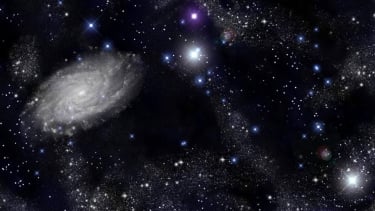Astronomers Create Universe Map Based on Albert Einstein's Theory
- Space.com
VIVA – Astronomers created the most detailed map ever of mysterious dark matter using the universe's very first light, and the groundbreaking image has possibly proved Albert Einstein's theory.
The new image, made using 14 billion-year-old light from the turbulent aftermath of the Big Bang, shows the enormous matter tendrils that formed not long after the universe exploded into being.
It turns out the shapes of these tendrils are remarkably similiar to those predicted using Einstein's theory of general relativity.
The new result contradicts previous dark matter maps that suggested the cosmic web — the gigantic network of crisscrossing celestial superhighways paved with hydrogen gas and dark matter that spans the universe — is less clumpy than Einstein's theory predicted.
The astronomers presented their findings April 11 at the Future Science with CMB x LSS conference at Japan's Yukawa Institute for Theoretical Physics.
"We've made a new mass map using distortions of light left over from the Big Bang," a cosmologist at the University of Pennsylvania, Matthew Madhavacheril said in a statement.
He also said: "Remarkably, it provides measurements that show both the lumpiness of the universe, and the rate at which it is growing after 14 billion years of evaluation, are just what you'd expect from our standard model of cosmology based on Albert Einstein's theory of gravity,"
Albert Einstein
- U-Report
Scientists think that the universe that formed after the Big Bang teemed with matter as well as antimatter particles, which are identical to their matter counterparts but with opposite electrical charges.
Because matter and antimatter annihilate each other when they collide, if both were made in equal measure, all of the universe's matter should have been annihilated. However, the rapidly expanding fabric of space-time, along with some helpful quantum fluctuations, kept pockets of the universe's primordial plasma intact.
Instead, the fabric of space-time evolved rapidly, along with some helpful quantum fluctuations, keeping the universe's ancient plasma pockets intact.
Then, according to the rules laid down by Albert Einstein's Theory of Relativity, the gravity that condensed and heated these plasma pockets produced sound waves that rippled out of the blobs at half the speed of light.
These giant waves push out material that hasn't yet been sucked into itself, creating a baby cosmic web of thin films surrounding countless cosmic voids, like a nest of soap bubbles in a sink.
As this material cools, the cosmic babies coalesce into the first stars, then into matter-rich galaxies at the meeting point of the tangled web.
However, in the past, astronomers studying cosmic webs have found what appears to be a big difference, the material is significantly more evenly distributed and less clumpy than expected.





























